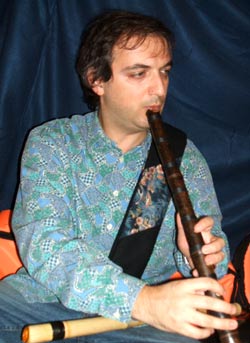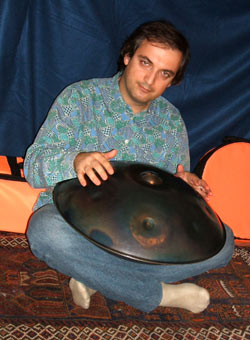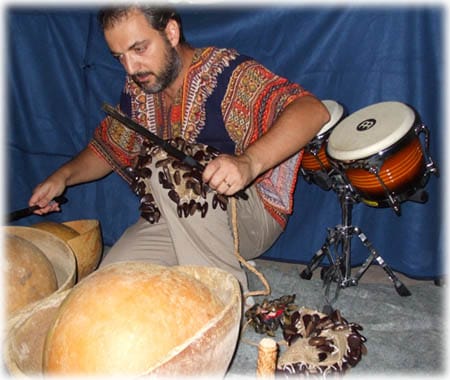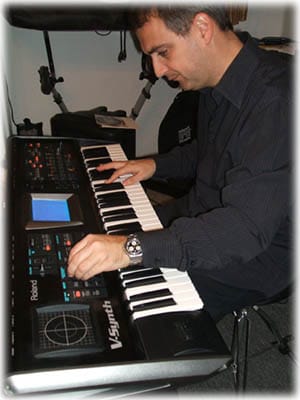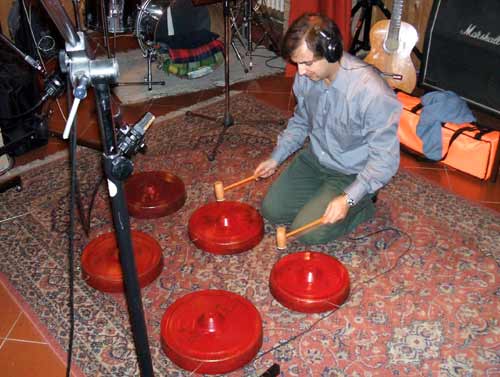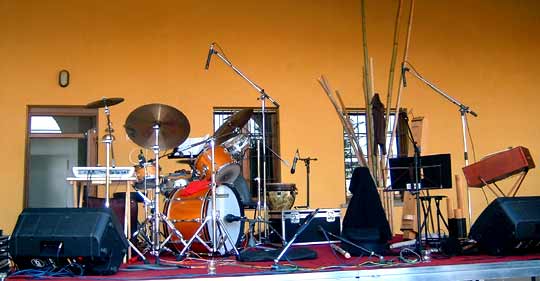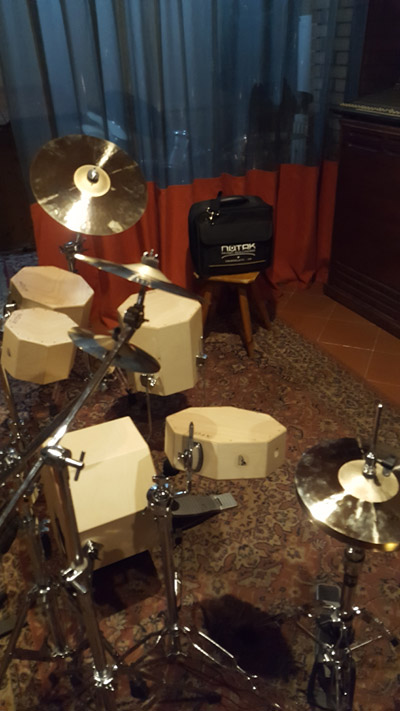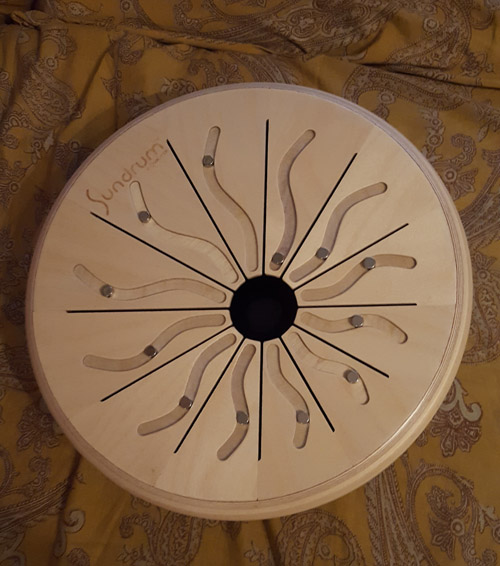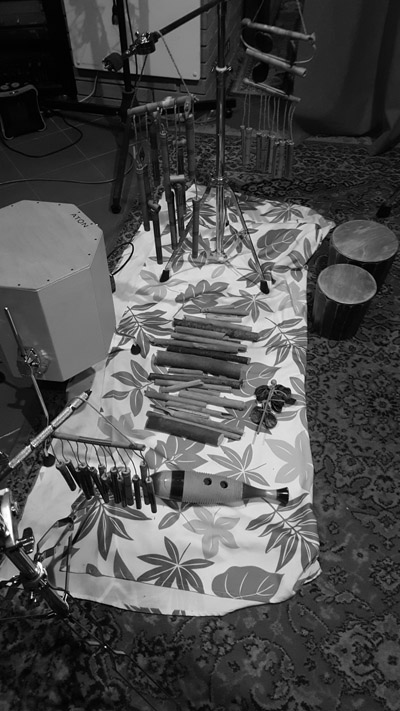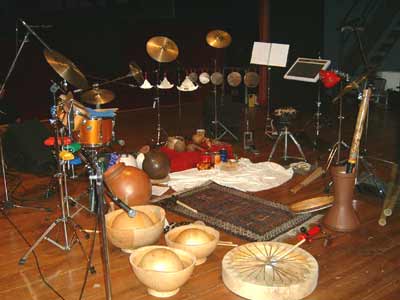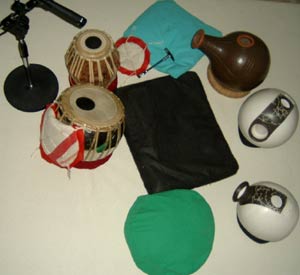
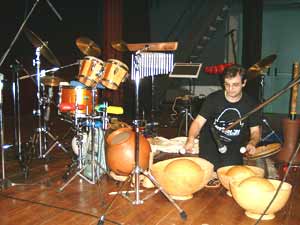
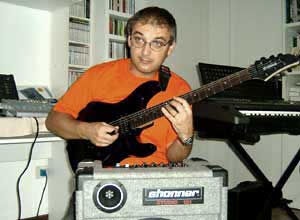
Some of the instruments used by Scala Stefano on record and in concert :
Hang = A recently developed metal percussion instrument inspired by the steeldrums of the Caribbean; designed and made by Felix Rohner and Sabina Scharer, Bern.
Kalimba = Linguaphone from Africa. Metal tongues are fitted on a small wooden box . One end of them is fixed to a bridge so that the other free end can be plucked by the thumbs
Kalungu = Talking- drum – the two ends of this hour glass shaped drum are covered with membranes which are connected by leather strings
Tongue Drum = A wooden box
Doussn' Gouni = West African harp with six nylon or gut strings. The resonating body is gourd stretched with a goat skin
Horns Ongo = They are tuned in the making, following a descending pentatonic scale – it is indeed with the roots of trees, hollowed out by termites.
Berimbao = Is a musical bow with a calabash resonator that originates in Southern Africa and was brought to Brazil .
Lolongo = A small bow with a string of liana – from Africa
Moringa = Is a clay pot drum used Brazialian Indios
Udu Drum = Is a clay pot drum from Nigeria
Water Drum = Nomadas in the Senegal use a water drum which consist of a large calabash filled with water on which a smaller calabash floats
Tar, Duff, Bendir, Daire, Riq = Frame Drums, They are played from the Near Est Central Asia, and Maghreb
Zang-è Saringoshti = These are pairs of small brass cymbals that are fixed on the thumb and forefinger of each hand; their principal purpose is to give rhythm to the dance.
Tabla = Tabla is the most generally popular of all Indian drums (tabla e bahya)
Ghatam = The Ghatam a very ancient percussion instrument of South India, is a mud pot with a narrow mouth.
Tambura = Accompanying drone instrument from India
Anklung = Bamboo rattles in tuned pitch from Java and Sumatra
Shakuachi = Japanese bamboo flute with five holes and no mouthpiece, capable of subtleties unequalled by any other flutes in the world. Used for meditation by Zen monks
Shamisen = A three string lute was introduced from China through the island of Okinawa. It was used in kabuki theatre. Most folk songs are accompanied with shamisen. Shamisen is a three string lute, consisting of a small body and long and thin neck
Taiko, O Tsuzumi = Japanese drum
Gender = Xylophones used in the gamelan orchestras of Bali
Gongs = from Burma, China, Korea, Japan, Bali
Bells and Chimes = From Burma, Tibet and Africa
Jew's harp = is one of the world's most ancient musical instruments. Scientists believe that is origin lies in south asia in the Stone Age; the most simple form of a jew's harp is one piece of wood; a thin angular offshoot from a thicker branch. Resonation is caused by changing the size of the oral cavity with the tip of the tongue.
Ki un Ki = A wind instrument used by the Siberian tribe of the Udegejs. The sound is suggestive of a trumpet. As the instrument has no fingering holes, the pitch can only be altered by lip pressure
Didjeridoo = In the aerophone family one finds the didgeridoo, formed from the branch of a tree that has been naturally hollowed out by termites.
Eletrictric & Synth Guitars = An electric & synth guitars with stomp-box
